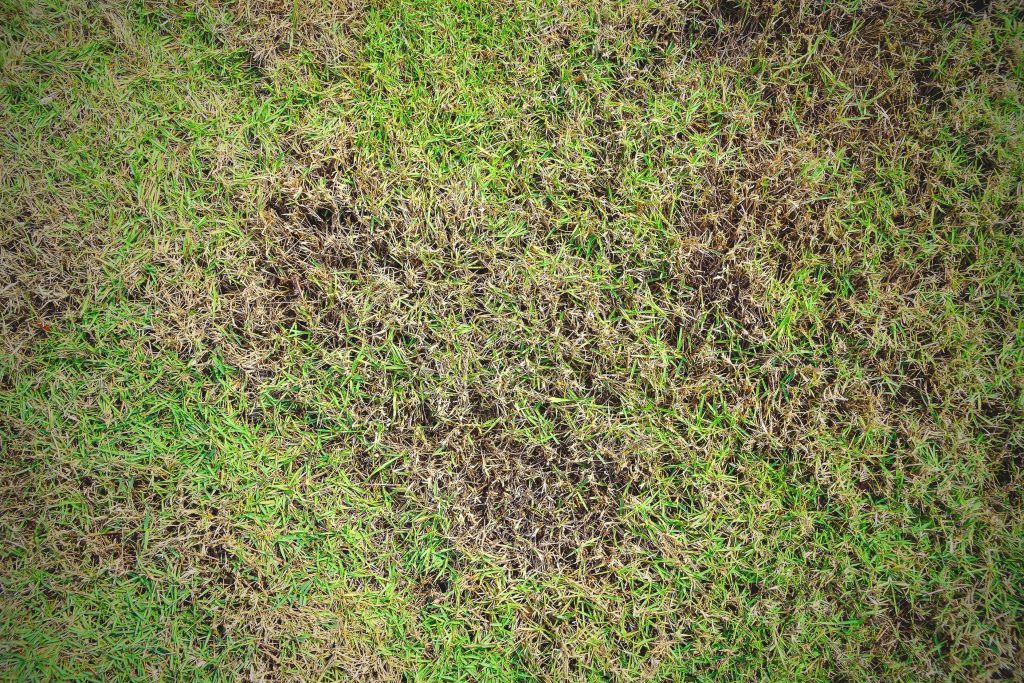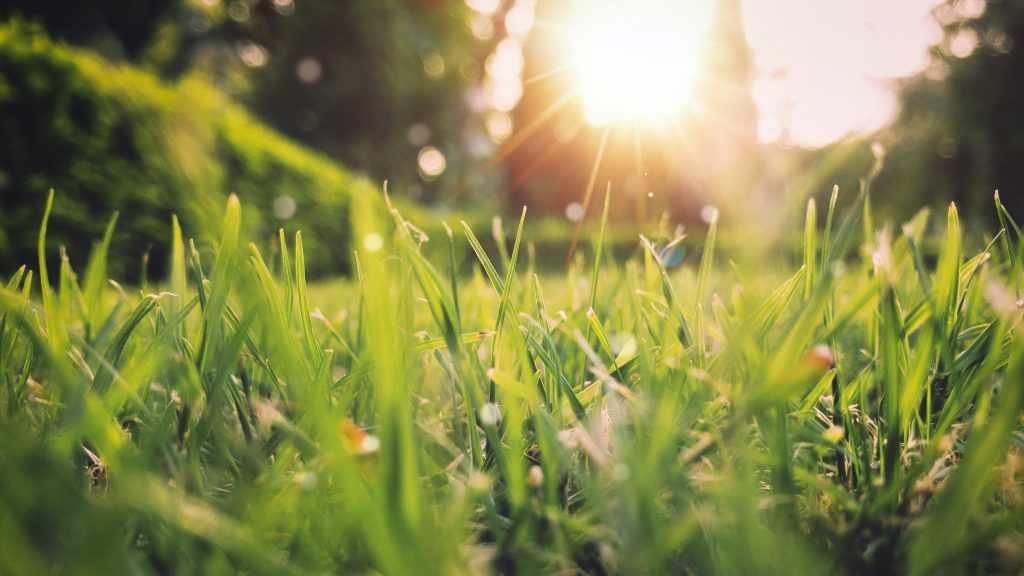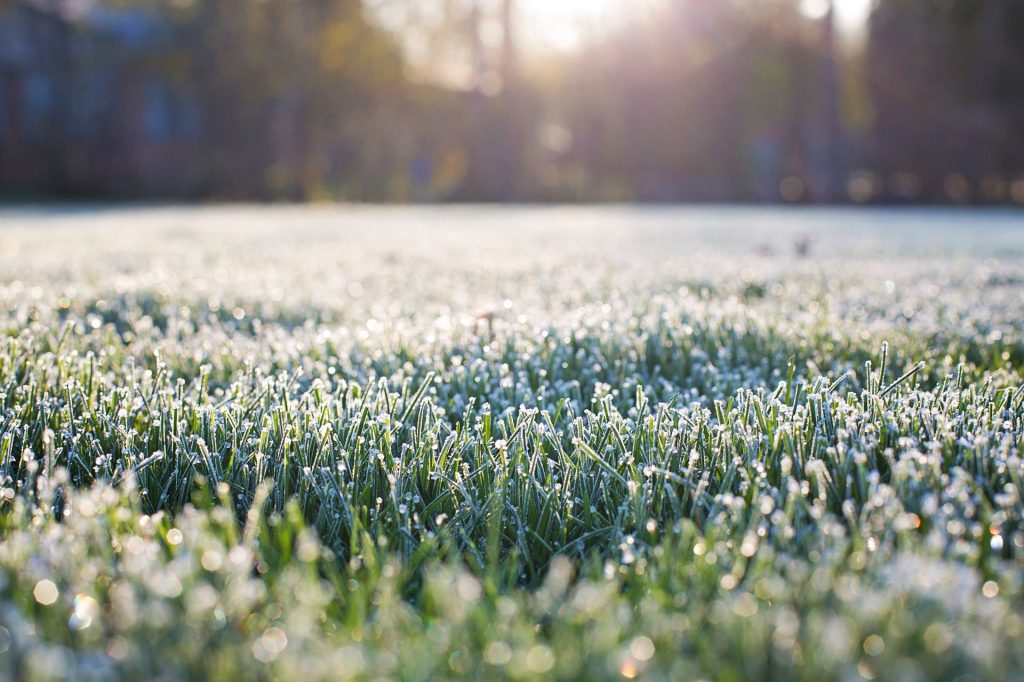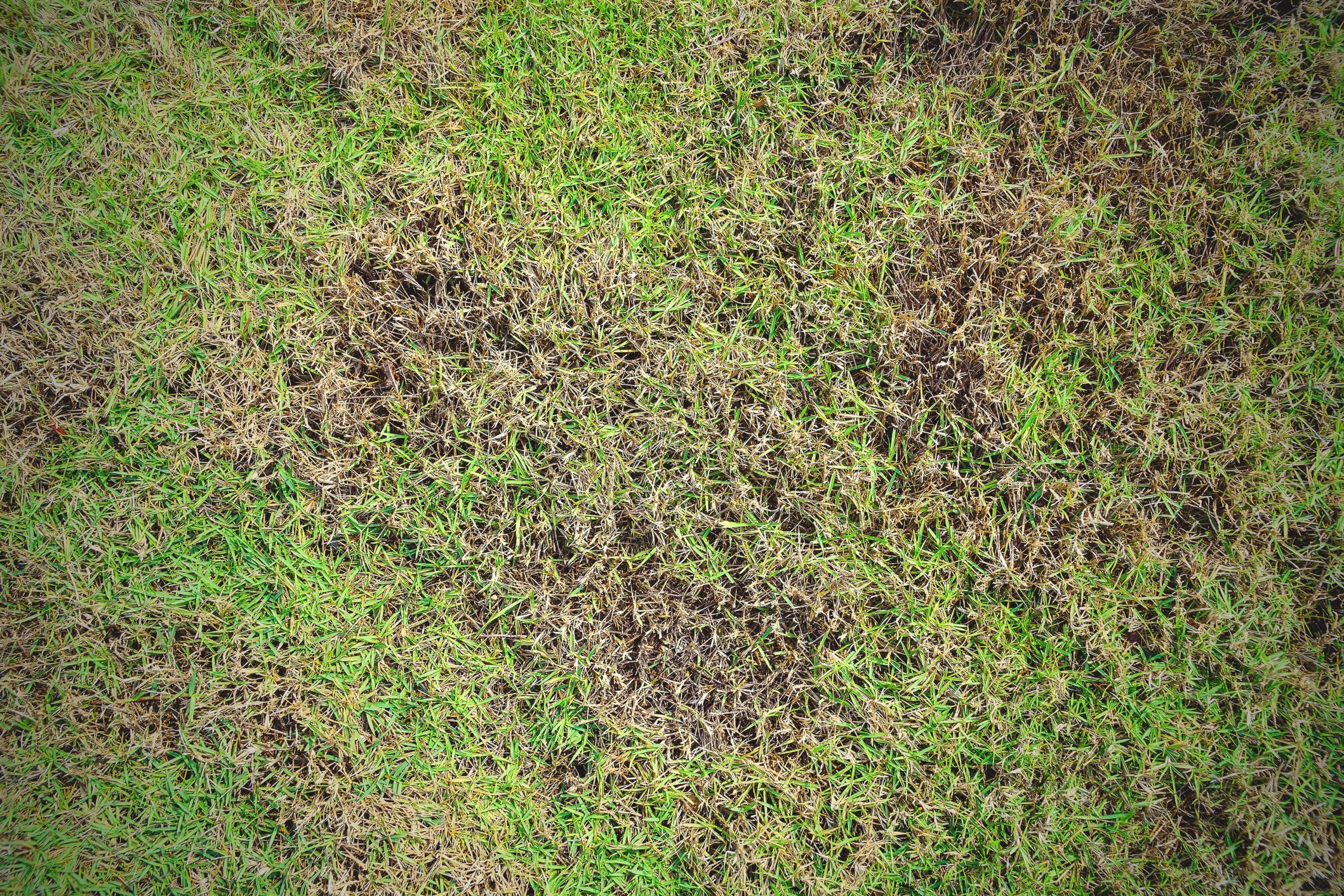If your lawn is looking a little bit worse for wear, you might be wondering when is the best time to repair it.
In this guide, we’ve explained when’s the best time of year to repair your lawn, to maximise the chances of it recovering well.
We’ve also explained some of the issues with repairing your lawn at the wrong time of year.
The best time to repair your lawn

The best time to do lawn repair activities is when your lawn is in the best position to recover well (meaning, it’s growing at its fastest).
Therefore, the best time of year to repair your lawn is in the middle of spring or early/mid-autumn, in the UK.
In the spring and autumn, there is enough warmth for your grass to grow back, after you’ve given it some TLC. There aren’t too many weeds growing at this time of year (they normally take hold in the middle of summer) and there’s enough moisture about – although you’ll probably need to water your lawn to give it the best chance of recovering from issues such as bare patches.
However, the best time to fix your lawn can also depend on other factors, such as:
- How much foot traffic your lawn will receive. When you repair the grass, such as by overseeding, you’ll need to keep off it for at least six weeks.
- The weather forecast for the next few weeks. Depending on the type of lawn repair that you’re doing, you might want to time the job based on what the weather is doing. For example, if spreading seeds on the lawn, you don’t want to do this when it’s extremely windy and the weather is dry, otherwise some of your seeds might blow away. You also ideally want to avoid repairing your lawn right before a heatwave, as this can impact your lawn’s ability to grow, whether you’re laying turf or planting new seeds.
- The exact part of the country you live in. If you live somewhere a bit colder, such as Scotland, you might be able to get away with repairing your lawn a bit closer to the middle of summer.
What happens if you fix your lawn at the wrong time of year?

Your lawn is a bit more fragile when it’s just been repaired.
If you’re sowing new seeds, they will take a while to grow. Likewise, if you add new turf, such as by transplanting it from a healthier part of your lawn, it will take a while to take root in the soil.
The issue is, if you repair your grass at the wrong time, it won’t have time to prepare for the heat of summer, or the frost it’ll experience during winter. This could result in the new lawn dying, meaning you’ll have to repair the grass again.
When sowing new grass seeds, it’s a good idea to give them at least six weeks to germinate, and grow strong. Likewise, when laying new turf, it will take about four weeks to root, meaning that the grass will be ready for the summer or winter.
Can you repair your lawn in the summer?

You can repair your lawn in the summer, but only if the weather is particularly mild, or if you wait until the end of summer.
You’ll need to give your lawn plenty of watering, to help keep it cool, and to replace any moisture that has evaporated in the sunlight. It’s best to water the lawn in the morning, to give your lawn the chance to absorb the moisture, before it begins to evaporate.
If you try to repair your lawn when the weather is extremely hot, the new turf may succumb to heat stress, resulting in it dying within a few weeks.
Can you repair your lawn in the winter?

It’s not a good idea to repair a lawn during the winter months. Even if it’s currently not too cold, a frost could still come, even in the early spring, which could destroy your efforts to improve your lawn.
Even without frost, the cold temperatures can prevent your grass from growing. Most cool season grasses go into hibernation at this time of year. This is why it’s best to wait until the middle of spring before repairing your lawn.

I’m Josh, and I’m the head writer at Lawn Care Pro.
I love everything lawns, but I’m a bit of a lawn mower nerd. I spend a lot of my free time tinkering with mowers, and planning my mowing schedule for the next few weeks.
I’m also into cars, which comes in very helpful when servicing a mower engine!





